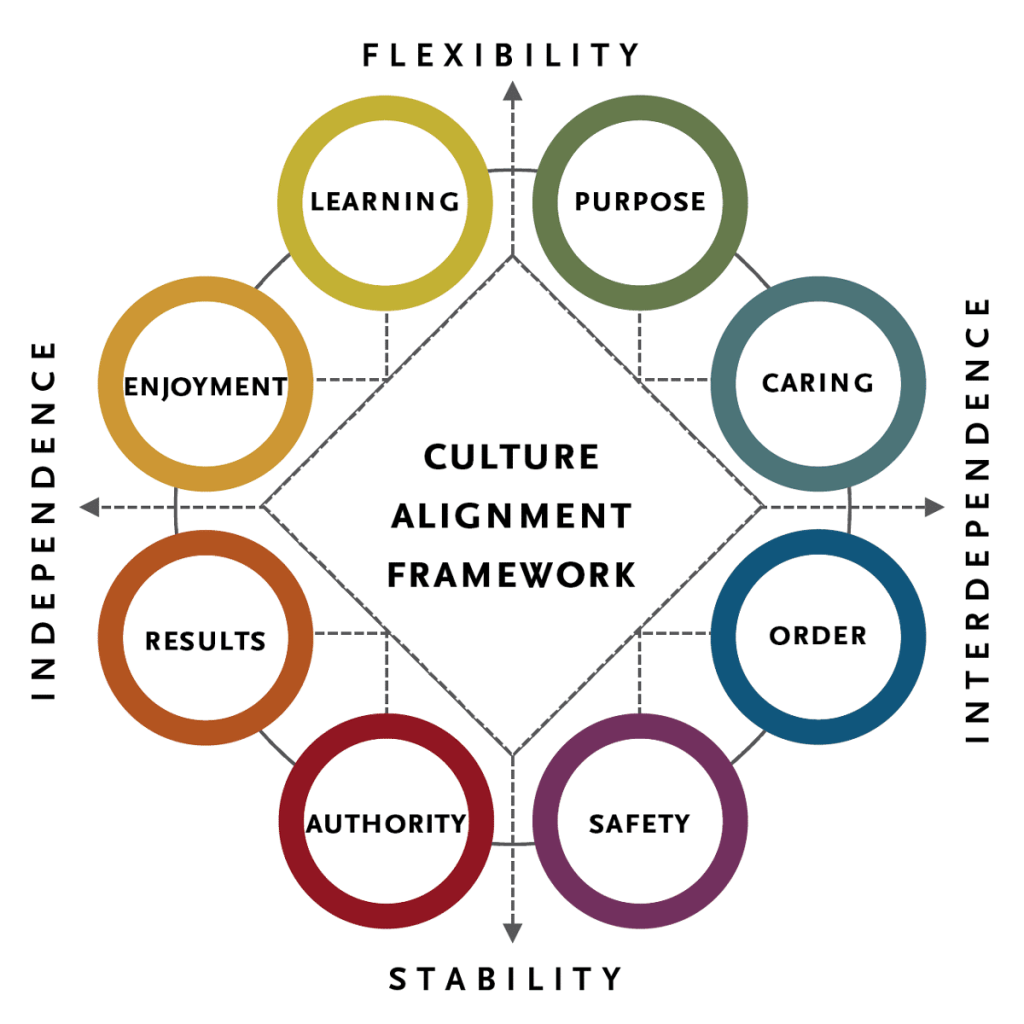Imagine walking into a new workplace for the first time. The air is thick with energy, but not the kind that leaves you drained. Instead, there’s a palpable sense of collaboration, respect, and a shared sense of purpose. That’s a clear indication of a strong organizational culture. It’s more than just a company handbook or a set of values displayed on a wall; it’s the very essence of how people interact, think, and work together.

Image: sergiocaredda.eu
A thriving company culture doesn’t happen by chance. It’s a result of intentional planning, open communication, and ongoing effort. It’s about nurturing a shared sense of identity, purpose, and belonging, creating an environment where everyone feels valued and empowered to contribute their best.
Defining Organizational Culture
A Shared Set of Values and Beliefs
At its core, organizational culture is the collective personality of an organization. It’s the shared values, beliefs, attitudes, and behaviors that define how people interact and work within the company. It’s the unwritten rules and norms that shape the daily experiences of employees. Think of it as the invisible glue that binds people together, shaping their actions and interactions.
Organizational culture is not static. It evolves over time, influenced by factors like leadership style, company history, industry trends, and the experiences of employees. A company’s culture can be either a driving force behind its success or a significant obstacle to growth.
Building a Positive Organizational Culture

Image: opentext.wsu.edu
The Human Element
Building a positive and thriving organizational culture is a continuous journey. It involves setting clear expectations, fostering open communication, celebrating successes, and recognizing individual contributions. When employees feel respected, valued, and supported, they are more likely to be engaged, productive, and loyal to the organization.
Cultivating Values
The foundation of a positive culture lies in clearly defining and communicating company values. These values should be more than just aspirational statements; they should be woven into the fabric of everyday operations. This means that hiring decisions, performance evaluations, and decision-making processes should align with the stated values.
Transparency and Communication
Transparency is key to building trust and fostering a culture of open communication. Employees should feel comfortable sharing their perspectives, ideas, and concerns without fear of retribution. Regular and consistent communication from leadership reinforces a culture of transparency and openness.
Empowerment and Ownership
Employees who feel empowered and take ownership of their work are more engaged and are more likely to contribute innovative ideas and solutions. This requires fostering a work environment that supports individual growth and encourages initiative, giving employees a sense of agency in their work.
Encouraging Teamwork and Collaboration
Building a culture of collaboration means fostering an environment where team members value diverse perspectives, work together to achieve common goals, and support each other’s growth. This can involve promoting cross-functional teams, fostering open communication channels, and recognizing collaborative efforts.
Modern Trends in Organizational Culture
Flexibility and Remote Work
The rise of remote work and flexible work arrangements has re-shaped the landscape of organizational culture. Companies are adapting to a more distributed workforce, emphasizing communication, collaboration tools, and fostering a sense of belonging among employees who may not physically be in the same location.
Focus on Well-Being
Modern workplaces are prioritizing employee well-being, recognizing the importance of work-life balance, mental health, and personal growth. Companies are offering benefits like mental health resources, flexible working hours, and programs that support employee well-being.
Diversity and Inclusion
Creating an inclusive and diverse workplace is no longer just a nice-to-have; it’s a necessity. Companies are actively working to foster diverse teams and build a culture where everyone feels welcomed, respected, and valued regardless of their background, identity, or beliefs.
Tips for Building a Positive Organizational Culture
Here are some tips you can implement to foster a positive and thriving organizational culture:
- Define and Communicate Clear Values: Having a clear set of values that guide everything your company does is vital. Make sure these values are readily accessible and communicated regularly through various channels.
- Encourage Open Communication: Create an environment where employees feel comfortable sharing feedback, concerns, and ideas. Regularly conduct employee surveys and hold open forums for feedback.
- Recognize and Reward Achievements: Take the time to celebrate accomplishments, both big and small. Publicly recognize and reward employees who embody company values and make significant contributions.
- Encourage Professional Development: Invest in opportunities for employees to learn and grow. Provide training programs, mentorship opportunities, and support for professional development goals.
- Foster a Culture of Respect: Create a workplace that promotes mutual respect and inclusivity, where everyone feels valued and empowered.
FAQ
Q: What are the benefits of building a positive organizational culture?
A: Numerous benefits stem from a positive organizational culture. These include higher employee engagement, increased productivity, stronger customer loyalty, better retention rates, and a more robust employer brand that attracts top talent.
Q: How can I measure the effectiveness of my company’s culture?
A: You can measure the effectiveness of your company’s culture through employee surveys, exit interviews, and by tracking key performance indicators, such as employee engagement levels, turnover rates, and customer satisfaction scores.
Q: What are some common signs of a weak organizational culture?
A: Common signs of a weak organizational culture include low employee morale, high turnover rates, lack of collaboration, poor communication, and a lack of trust between employees and leadership.
The Culture Of The Organization
Conclusion
Building a strong organizational culture requires ongoing commitment and effort. It’s about creating an environment where everyone feels valued, respected, and empowered to contribute their best. This commitment leads to a more engaged and productive workforce, driving business growth and success. Do you believe that organizational culture plays a crucial role in achieving business objectives? Let us know in the comments below!





